Introduction:
When it comes to blockchain games, what comes to mind is the fatal death spiral of the 1.0 era. Our Melon Lab has been exploring this topic since February 2021, and only a few projects have survived after the tide has receded. Nowadays, there is a rising trend of playable blockchain games on the market, with many excellent teams from web2 games transitioning to web3 games, showing a momentum to lead the development of blockchain games 2.0.
This article discusses whether playable blockchain games that emphasize playability are most likely to find the “Holy Grail” in the upcoming bull market. If so, as a user, how can we logically find a specific project and prepare in advance?
1. About the “Holy Grail”
- Evening Must-Read | Reasons why the Federal Reserve is destined to fail
- Using Lido as an example, we delve into the potential risks of the LSD protocol.
- LianGuaintera Partner Analysis of Decentralized Sorting Mechanism
1. Cryptocurrency “Holy Grail”
In February 2021, the founder of BiHu, the largest Chinese-language blockchain content platform, GuLu, shared a wonderful speech in the community titled “Finding the Cryptocurrency Holy Grail: GuLu, the Founder of BiHu, Analyzes the Potential of Ethereum and Other Productivity Platforms”. The “Holy Grail” here can be understood as “blockbuster projects”.
GuLu believes that after Ethereum (ETH) transitions to the Proof of Stake (POS) consensus mechanism in 2022, it will deflate by about 0.15% per year, opening up the second curve of Ethereum’s growth. In fact, the current annual deflation of Ethereum is about 0.43%. Currently, EIP-1559 has burned 3,550,364 ETH, and the bull market will accelerate, plus Ethereum is the infrastructure of Layer 2. If Layer 2 prospers, Ethereum prospers. Ethereum’s acceleration and rise in the future is just around the corner. Hold on and support it!
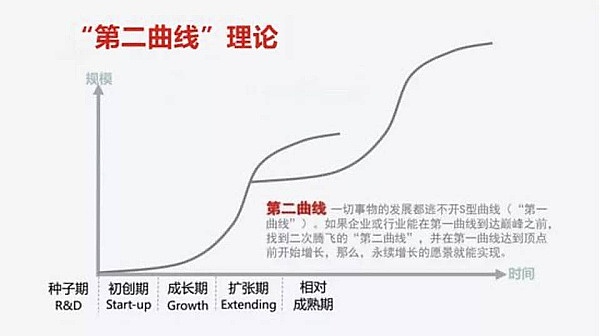
2. The “Holy Grail” of the 1.0 era of blockchain games
Undoubtedly, these two projects are:
Axie Infinity, with an estimated total revenue of over 400 million US dollars and a highest circulating market value of 10.4 billion US dollars;
STEPN, with an estimated total revenue of over 200 million US dollars and a highest circulating market value of 2.3 billion US dollars.
(These figures do not include token sale revenue)
3. What about the “Holy Grail” of blockchain games 2.0?
Referring to the achievements of the previous round, let’s make an estimate: total revenue exceeding 300 million US dollars. The overall lifecycle will be longer, calculated based on one year, with the first three months being a low-income period and the last three months being a decline period. Daily revenue may range from 2 million to 10 million US dollars.
It is currently August 2023, and it seems to be a deep bear market, but BTC has already risen from around 15,500 U to around 30,000 U. There are reports that top global financial institutions are secretly laying out Bitcoin, betting on the last crazy bull market in the cryptocurrency industry (the mainstream opinion was the same in the last round). The circulating market value of the “Holy Grail” projects in the next round of blockchain games is estimated to exceed 15 billion US dollars.
2. Subcategories of Chain Games: Asset Composition
The ultimate goal of this article is to find the “Holy Grail” project. However, even in a bear market, new chain game projects are diverse and varied. If you analyze each one, you’ll need a quick and effective remedy for your heartache.
We still need to establish a methodology for finding projects, filtering by category from large to small, and then striking precisely. Let’s first talk about categories: there are many ways to categorize chain games, and W Labs has detailed classifications in previous articles. In this article, we categorize chain games into the following four types based on their asset composition. Let’s see which of these four types are more likely to find the shadow of the “Holy Grail”:
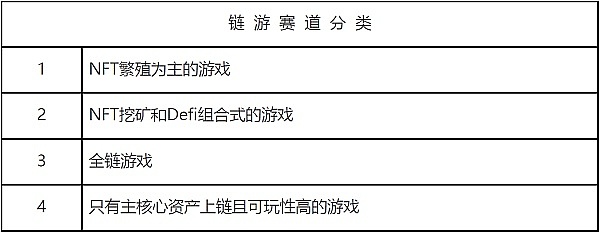
1. Games with NFT Breeding as the Main Focus: Axie Infinity, STEPN
These two projects started the era of chain games 1.0. Both projects achieved great success during the previous bull market, with Axie starting at the beginning of the bull market and STEPN ending at the tail end. They are also waiting for the arrival of the next bull market, preparing to relaunch the “Holy Grail” halo, so their products are being iterated and improved:
Axie Infinity
It has been listed on the Apple Store and Google Store in some countries, which helps attract more new Web2 players.
In the past, players had to buy three Axies to play the game. In the latest update, a free mode has been introduced, allowing free players to accumulate materials and upgrade Axies through daily and weekly tasks. There is a chance to obtain Axies with decent combat power, which helps new users get started faster and enjoy the game.
STEPN
It has proposed the FSL ecological concept and launched DOOAR, which is mainly used for multi-chain decentralized exchanges. It has also launched MOOAR, a multi-chain NFT marketplace and launch platform. The studio behind it will soon release a new game, Gashero, and has also collaborated on multiple games.
StepN has also been listed on the Apple Store and Google Store, and you can purchase running shoes with a credit card. It is also committed to attracting more new Web2 players.
These two previous “top dogs” both belong to the breeding category, showing the charm of breeding. Behind breeding lies its distinct Ponzi model characteristics. As Guagua mentioned in an article on W Labs titled “Why is WEB3 a Ponzi Model?”, the Ponzi model itself is not good or bad (scams are bad), but it directly targets the greed and vanity within human nature.
It is worth mentioning that the widely defined Ponzi model is also common in real life: in the past decade, many internet companies have used massive subsidies to attract users, which is also a type of Ponzi model. The highly popular domestic fantasy masterpiece “The Investiture of the Gods 1” also used a similar model at the end, with the most shocking scene of “Prime Minister returning to court with the Four Heavenly Kings”. This scene created unlimited anticipation for the second part of the series and laid the foundation for the box office of the second part. This can be considered an exquisite and elegant Ponzi model, like the “Prime Minister in the Ponzi”.
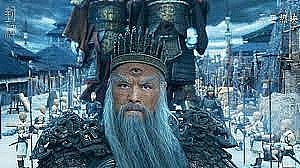
But whether this category can continue to shine in the next round, according to the characteristic of “speculating on new but not old” in the cryptocurrency circle, it needs to show users a different new narrative, which is quite challenging.
2. NFT mining and DeFi combination games: MBOX, Tiny world
In the era of blockchain games 1.0, MBOX also achieved great success, once the leader of blockchain games on BSC, the most attractive one on BSC, with a peak circulating market value of $1 billion; continuing this path is Tiny world, which is similar to MBOX in terms of its model, with a peak circulating market value of about $150 million (50% of the tokens are burned, which is not included in the calculation).
However, the DeFi part can only be understood and played by Web3 users and advanced users, and it is easy to discourage novice users, making it difficult to attract Web2 users in the short term.
It is difficult for losers to win the world. Currently, the possibility of finding a “holy grail” in this category is even smaller than the first category.
3. Full-chain games: Dark Forest, Loot
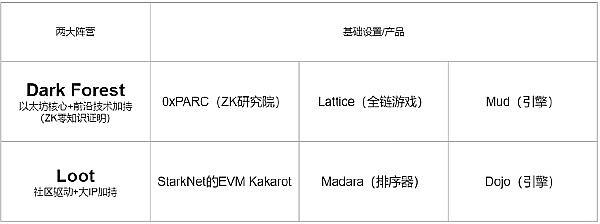
Full-chain games have been very popular recently. They are games where the rules, computational logic, and data storage are all completed on the blockchain. To expand further, full-chain games are permissionless on the blockchain, and assets can be freely combined. It was gradually mentioned by people at the beginning of this year and received widespread discussion on Twitter in June and July.
We have always believed that the current full-chain games cannot be classified as traditional games, but as a special category similar to DeFi, because the current user group is not the same as ordinary gamers, but mainly consists of WEB3 builders and believers. However, full-chain games do have the genes of legitimate encryption pioneers. For example, Dark Forest was created by Brian Gu in 2020. At that time, he was still working at the Ethereum Foundation and found ZK interesting during his research. He happened to want to make a game, so an experimental product was born. He tried a new technology: zero-knowledge proofs to solve the problem of war fog in the game. From that moment on, full-chain games began to resemble real games.
However, we must continue to support and encourage the advancement of such products. This is the hope for the future of WEB3 replacing WEB2 in certain areas. For example, the application of zero-knowledge proofs in WEB3 Texas Hold’em. Traditional WEB2 online poker is basically not trustworthy, especially after watching “Dying to Survive,” we all know that people like Wang Chuanjun (the one who said, “Sleep on the floor today, sleep with the boss tomorrow”) can manipulate the system and deal any desired cards. But if zero-knowledge proofs are used in WEB3 Texas Hold’em, the dealing mechanism can be transparent and open.

The full-chain game applies the characteristics of blockchain, but currently it has many limitations that are not conducive to the design of complex logic and rules in games. Therefore, it is currently mainly in the stage of building infrastructure and exploration. The product experience for ordinary users is not sufficient, and we should not expect to see the emergence of a “Holy Grail” project in the short term.
4. Games with only core assets on the chain and high playability
The highly anticipated era of blockchain gaming 2.0 is derived from the idea that there will be a new bull market based on WEB3. The necessary condition for the next bull market is that certain new opportunities in the WEB3 track will attract a large number of new users and institutions. When these new users come in, there must be applications that allow them to play. This category is focused on this goal:
-
Emphasize playability and allow new users to have fun;
-
Emphasize product experience without pursuing full on-chain integration at this stage, just having core assets on the chain is sufficient;
-
Emphasize the construction of a user ecosystem, bring projects and users closer together, and ideally make users feel like they are part of the project.
In our view, this category of games is most likely to touch the Holy Grail in the next bull market. It is also a category that W Labs has designated as the most important research focus from last year to this year. It has several characteristics:
-
The production teams are mostly outstanding teams from WEB2 games, and they have standards for playability, completeness, and visual appeal. After all, Chinese games have led the mobile gaming industry for ten years, and there is a wealth of experience and talent accumulated;
-
The playability of these products is obviously higher than that of native WEB3 games, and they are familiar with the preferences of ordinary users (this is the most important point);
-
The original WEB2 thinking is deeply ingrained, while the operational thinking of WEB3 is not enough;
So how do we select the “Holy Grail” project in this category? The definition of playability is subjective, and different people have different judgments. Some may love MOBA, while others prefer SLG, and some play card games while others play mahjong. Therefore, this article sets a standard: as long as a WEB3 blockchain game inherits the essence of a popular WEB2 game, or even directly replicates it, then its playability has been validated by a large number of ordinary users. We will analyze the Holy Grail projects from these projects.
We have selected three representative WEB3 blockchain game projects, “Matr1x Fire, Seraph, and Oil War,” from the W Labs project database as case studies. We will analyze them one by one. They represent different game types, different WEB2 benchmark projects, and different development stages.
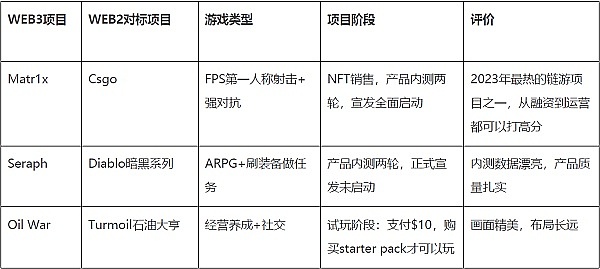
3. Case Analysis: Coming in Strong, Competing for the “Holy Grail”
1. Matr1x Fire: The CS:GO of WEB3
Friends who have played CS are getting older. They have been influenced by shooting games since they were young. Just like 30 years later, friends who play “eating chicken” are no longer young. They have been saying “Chicken dinner tonight” since they were young.
Matr1x Fire started making moves in the market in Q3 2022. W Labs conducted background checks on the team and sent people to experience the game at the beginning. It is indeed a team from a big company, with years of experience in FPS research, development, and operation, and it has financing and good fundamentals. Our style is to prefer to invest in losses rather than make wrong investments; to be cautious before birth rather than grandiose at the funeral.
After confirming that we can continue to follow up, we opened a dedicated channel for discussion in the Guatian community WGGDAO and called on friends in the Guatian community to pay more attention to Matr1x. They actively organized and signed up for both the first test and the current second test. At present, Matr1x seems to be the most promising “Holy Grail” project in the first half of 2023. At least in terms of the price of the main NFT2061 (from Mint Price 0.1E to the current 1.3E), it reflects the trust of users in the project.
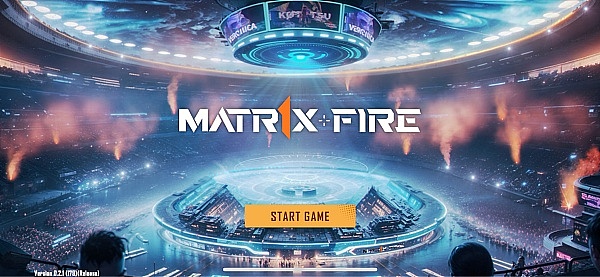
Let me briefly introduce the basic information of the project:
Matr1x Fire is a Web3 FPS shooting game. In the game, it adopts the mature business model of CS: GO, combines the innovation of issuing assets on the Web3 chain, and integrates game NFT art, e-sports events, and million-word novels to create a Web3 brand.
The team members have more than 8 years of experience in game development and publishing. The founding team members all come from major game companies and have participated in the development and publishing of more than 10 large-scale games. The total revenue of their game projects exceeds 3 billion US dollars, and the number of active users is close to 100 million. They have also accumulated rich experience in global market product distribution, and the team is distributed in South Korea, Japan, the United States, Singapore, Hong Kong, and other places.
Matr1x successfully completed a Series A financing of 10 million US dollars in 2022. The investors include Hanwha Financial Group, the second largest financial group in South Korea, early investors of Ethereum, Hashkey Capital, Amber Group, and Seven X.
In Matr1x Fire, in addition to experiencing traditional shooting content, such as various game modes, multiple game maps, support for small-scale competitive play, team e-sports, and hosting events, players can also obtain props skins by opening loot boxes in the game after paying a certain fee. Both the loot boxes and props skins exist in the form of NFTs and can be freely circulated and traded on the chain.
Let’s take a look at the WEB2 game CS: GO that it benchmarks. On March 25th of this year, the number of simultaneous online players reached a new high, breaking through 1.5 million. The number of opened boxes in March increased by 17 million compared to February, and the estimated revenue in March was at least 100 million US dollars. The sword is not old.
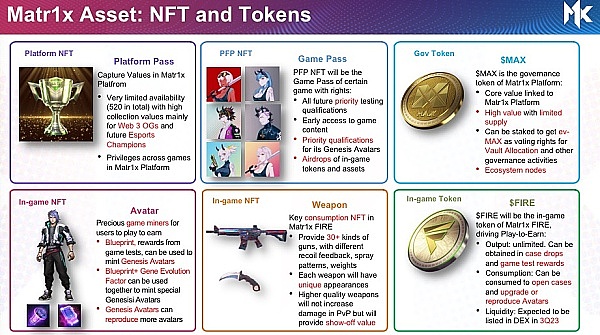
Actually, the chests, keys, skins, and props in shooting games can naturally be made into independent NFTs with high compatibility. In the Web3 business model, projects issue more NFTs to help with early-stage launch and community cohesion, establishing consensus. This is also why Matr1x assets are on fire:
-
YATC Trophy NFT, reflecting the value of champions, can help establish attractive competitions in the early stage;
-
MAX Token, reflecting the value of the entire ecosystem, can connect more resources and continuously attract resources to the ecosystem;
-
2061 NFT, rewarding early supporters, reflecting player value, accurately targeting FPS players in the early stage;
-
Character NFT, increasing the gold farming threshold in the game without conflicting with free users, mainly used to prevent bulk farming by secondary accounts;
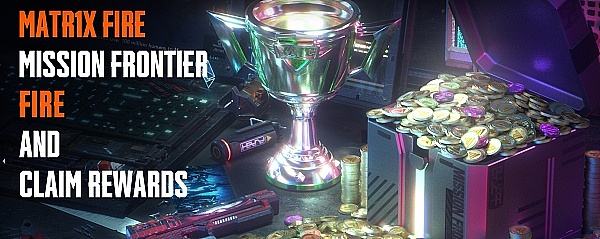
The project team explores the incremental market by finding players who like FPS games, tirelessly conveying a shared vision that can be built together, and sketching a Web3 version of the esports blueprint. This also solves many long-standing problems faced by Web3 projects, such as how to acquire new users when the number of Web3 users is too small, how to break the death spiral of assets, and where to find the first wave of seed users for the product.
Matr1x Fire is on the path to the “Holy Grail”. Some breakthrough actions in August in terms of operations make people feel that it is breaking free from the embarrassing situation of small market size and the inability to balance gameplay and economy in Web3. The “win to earn” model also inherently extends the cycle of the death spiral. The team’s adeptness in fundraising also gives users the feeling that they can at least survive until the next bull market. Within W Labs, we often use the term “Hexagon Warriors” to describe Matr1x.
It seems like I heard a new friend say, “Matr1x is already a blue-chip blockchain gaming project now, what if we missed out on it at the beginning?” Don’t worry, this is why we have analyzed three cases. Matr1x was the earliest to rise, let’s take a look at the others and learn the analysis logic from them.
2. SERAPH: The Big Pineapple of Web3 (Diablo)
Seraph is another project that has been popular during the internal testing phase in the past few months: it has undergone two internal tests in April and July this year, and the test results have been quite good. According to the information obtained from the project’s AMA, there were 3,500 and 4,200 players respectively (not addresses, but accounts) participating, with an average online time of 4 hours and considerable user retention data.
The game is an ARPG, which means the main gameplay is killing monsters and obtaining equipment for monetization, making the game’s “grind” factor continuously increase. It has to be said that this kind of gameplay, where you keep grinding for equipment sets, has many loyal fans.
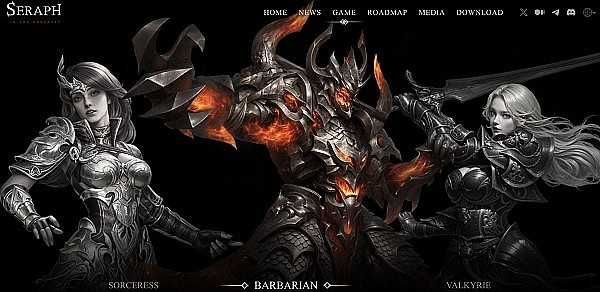
Introduction to Seraph: Seraph is an APRG game inspired by Diablo, developed by the Korean game company Actoz Soft, which has released well-known titles such as “Thousand Years”, “Legend”, and “A3”. The overall tone and gameplay of the game also follow the dark and gothic style. The game is set in a dark era, a time calling for heroes. There are a total of 5 heroes to choose from (currently only Barbarian, Mage, and Valkyrie are available), and then embark on an adventure, constantly killing with the mouse and keyboard.
The main assets of the game are equipment, as well as gems, jewelry, and runestones that can be socketed. After the hero levels up, they can learn different skills and magic by allocating skill points. After completing basic adventures, players can unlock the Mystery of Chaos, Void Realm, and Mystery of Depth modes by meeting various conditions. These modes drop different types and levels of items and equipment. In terms of web3 integration, it mainly utilizes special NFTs (Unique NFTs) to empower the production of Soul SLianGuair, which is used to further upgrade NFTs and obtain tickets for the Chaos mode. The core token $SRF is mainly used for NFT identification, equipment forging, and governance participation.
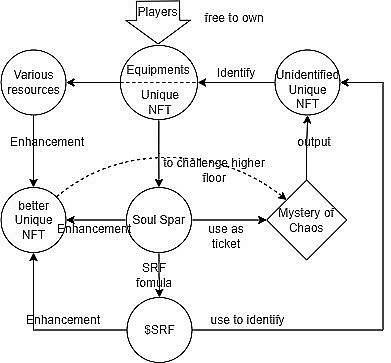
Seraph is benchmarking against the WEB2 game series “Diablo 4”, which was just released in June this year. Let’s take a look at the data: it sold nearly 700 million dollars, and the first season starting in July had 7.1 million characters. Sounds impressive, right? But players have been complaining, especially after the pre-season patch, the rating dropped to 2.6. In fact, criticizing Blizzard has become a daily social behavior for Blizzard players, hahaha.
Even if the benchmarked game is criticized, it cannot hide the fierce user base of such games, as evidenced by Seraph’s two closed beta tests. However, up to now, Seraph’s operation has been lackluster. The community has been quietly conducting joint promotion activities and even announced a 500,000 U reward on Twitter, but there has been little dissemination in various web3 communities. At the same time, the total trading volume of the previously released NFT “Seraph Priority LianGuaiss” is only 31 ETH, and it is still unknown how this NFT will be empowered. We tend to believe that the overall operation plan has not been fully implemented, and the project team is currently just laying the groundwork. We hope that the project team can spend more effort in researching the operational steps and nodes.
Overall, the quality of Seraph is excellent, and by capitalizing on the nostalgia of Diablo, it has provided players who enjoy gaming with a true gaming haven in the boring bear market. In addition, the economic model revealed during the project’s AMA will be based on “equipment NFTs”, which is also worth looking forward to. We will continue to observe and see if Seraph has the ability to touch the “Holy Grail”.
3. Oil War: The Oil Tycoon of WEB3
I have a soft spot for simulation business games. A few years ago, I played a game called “Turmoil”, which was a oil tycoon game in the WEB2 era, and I never got tired of it. Recently, while organizing the newly launched blockchain games, I accidentally came across a game called “Oil War: The Oil War”, and I downloaded it immediately and spent 10U playing it.
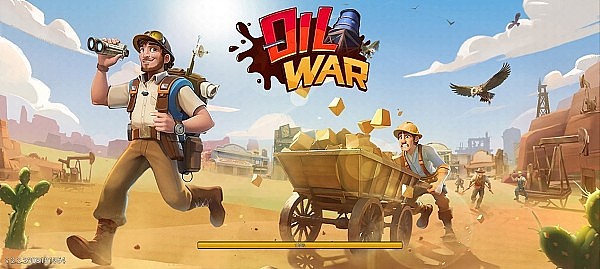
Speaking of the current user base of blockchain games in the WEB3 community, hardcore gamers are still a minority, and most players lean towards casual gaming. Therefore, business simulation games are naturally more suitable for the current blockchain games. The success of the farming world and sunflowers in the last bull market is proof of this. What’s the point of killing and fighting every day? Planting flowers, building houses, fishing, stealing crops – you can earn tens of U every day with low entry barriers and strong social interactions. At the same time, these types of games are also suitable for Ponzi models in terms of token flow.
Let’s talk about the basic information of Oil War: The Oil War. It is a WEB3 simulation business game that simulates the complete process from oil extraction to sales. First, let’s take a look at the background of the game. The developer of the game is MetaSensor and the publisher is Surf Guild, a blockchain game studio with a background in traditional games for 8 years. They raised 1 million USD in seed funding and have collaborated with well-known partners such as Wemade, BlockchainsLianGuaice, and Playmining.
Similar to Matr1x and Seraph, Oil War is also an imitation and continuation of the classic WEB2 game Oil Tycoon. In traditional games, farming games like QQ Farm and SimCity can attract a large user base. Currently, blockchain games are particularly lacking in users, so I hope Oil War can highlight this feature of the game itself.
However, unlike Oil Tycoon, Oil War not only has the basic PVE mining map clearance, upgrade, and money-making features, but also has innovative gameplay such as team tournaments, item systems, and land management. The consignment function allows players to engage in free trading, while integrating the game with WEB3, providing opportunities to earn rich encrypted assets.
In the game, players can earn game tokens called oil coins by completing daily tasks, achieving rewards, ranking in teams, and developing and managing land. These tokens can be exchanged for governance tokens (OT) at a fixed ratio of 1000:1, and further exchanged for other on-chain assets for cashing out. Currently, the game only has PVE and tournament gameplay, and I am looking forward to the release of other advanced gameplay in the future. It will be a good business simulation work.
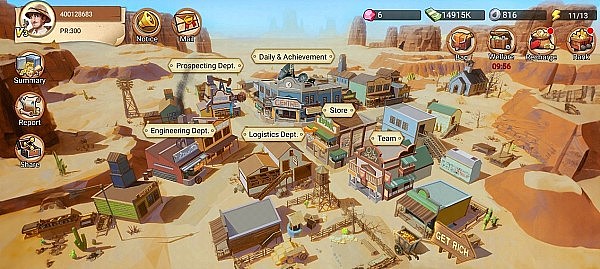
The game economy model of Oil War is a typical fusion of WEB2 and WEB3. The game will be available on Google Play and App Store with traditional in-app purchases, allowing players to deposit funds through traditional channels. At the same time, the project team has specifically developed a game service platform for WEB3 called ComLianGuaiss (similar to wemix by Yoozoo Games, with a big ambition), which is used for trading game virtual assets (NFT assets, governance tokens OT, etc.). It can also facilitate NFT and token-to-token trading with mainstream games and WEB3 assets on the market, connecting to a broader WEB3 world.
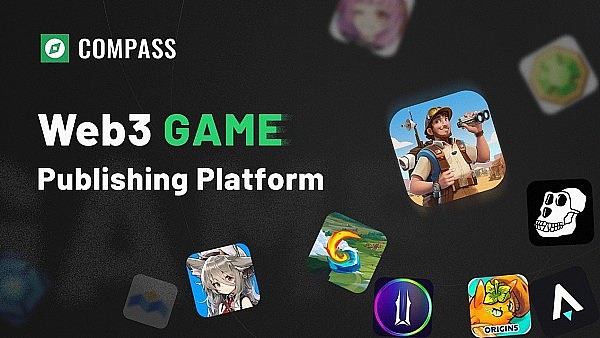
From the construction framework of the ComLianGuaiss platform and ecosystem, it can be seen that the project party has a pragmatic and long-term layout for web3 – leveraging the resources and leverage of web3 through comLianGuaiss as an entry point, filling the platform content with its expertise in game development, and integrating Web3 and community resources through platforms like Surf Guild. This three-round layout of development, transaction, and operation forms a complete ecological closed loop. If it can be put into motion, it will create a powerful wheel effect, providing the project party with a continuous source of expansion power.
There is another point that must be emphasized. From the preview of the next version update of the game, it is found that the product will soon integrate an advertising SDK interface. Does this mean that the project party has found advertisers? If so, that’s amazing. We have always emphasized that external revenue is one of the best ways to solve the death spiral, rather than the project party and players mutually cutting each other. This game also involves oil. Has it attracted sponsorship from Middle Eastern sheikhs? Haha.
Compared with the already popular Matr1x and the Seraph which has undergone two rounds of official testing, the stage of Oil War is earlier, which may be more suitable for players who want to enter early for bargain hunting in the “Holy Grail” search journey. Currently, Oil War is still in the early trial phase, and the community is also in the early stage. Interested players can try this style of game. The graphics are very good, and it will support more language versions (including Chinese) in the future.
IV. Conclusion
We believe that in the rolling wheel of web3 games, there are always outstanding projects that emerge, some lasting longer and some disappearing quickly. The length of a game’s lifecycle depends not only on the different economic models of the game itself but also on the game content, quality, and the success or failure of subsequent operations.
From the perspective of users, how to find blockchain game projects that may become the “Holy Grail” in the next bull market? This article elaborates on one train of thought:
First, the next bull market in the cryptocurrency industry will still rely on a large number of new users;
Second, new users will not immediately enter high-threshold full-chain games or DeFi games. They are more accepting of products that are similar to the WEB2 games they are familiar with in terms of playability and product quality. Therefore, in the category of chain games with high playability and core assets on the chain, it is most likely to find the “Holy Grail”;
Third, find WEB3 products that imitate traditional popular games and analyze them from various aspects to verify their potential to become the “Holy Grail”.
This article lists three case studies. At present, Matr1x was launched the earliest and has done the best. The entire team, from the founder to community members, is deeply committed to the idea of putting players and the community at the center and spare no effort in endorsing the game.
Seraph is considered a high-quality work based on the game’s quality and the data from the internal testing. We look forward to seeing the project party’s actions in operation and community, so that the accumulated momentum can be utilized and truly take off.
Oil War is obviously still in the early stage of gathering momentum, but from the layout of the project (game development and download, ComLianGuaiss trading platform construction, and Surf Guild community), we can vaguely glimpse its ambition in web3. It will also be an excellent web3 game ecological product that focuses on quality and players.
Finally, it is worth emphasizing that the “Holy Grail” project is hard to come by. In the last bull market, there were only two, and hitting one would yield a hundredfold return. Therefore, it is necessary to conduct in-depth research in every aspect. We have deeply explored the growth process of the previous two Holy Grail projects, which were thrilling journeys that eventually transformed the entrepreneurial team into invincible warriors. As the saying goes, having many skills does not burden the body. Even if you draw a blind box of Xiaolongnü, you can mint out Madam Ma (why did I suddenly say this strange sentence).
End of this article.
Produced by W Labs
Case official website
Matr1x: www.matr1x.io
Seraph: www.seraph.game
Oil War: oilwar.surfguild.io
Like what you're reading? Subscribe to our top stories.
We will continue to update Gambling Chain; if you have any questions or suggestions, please contact us!